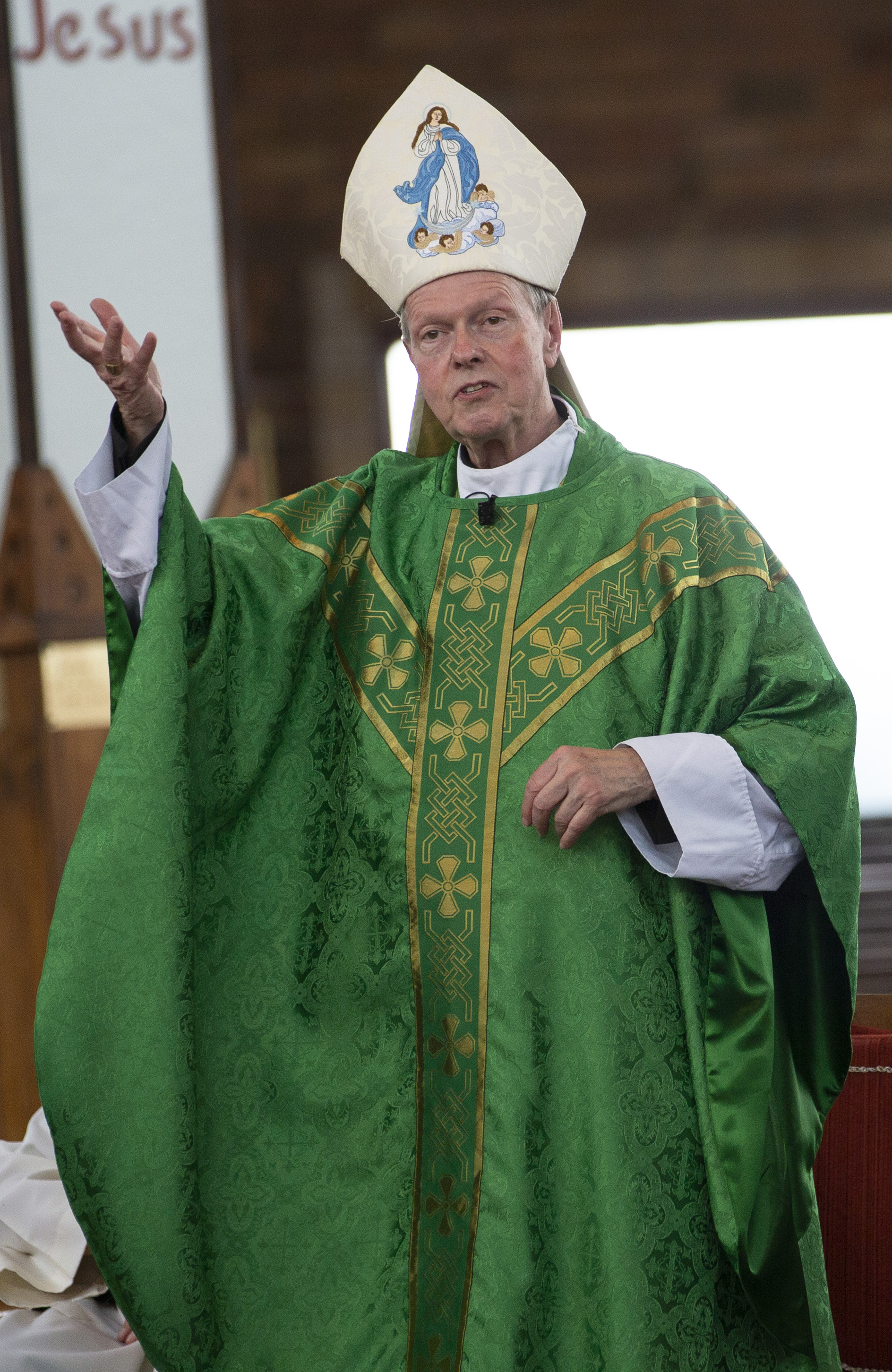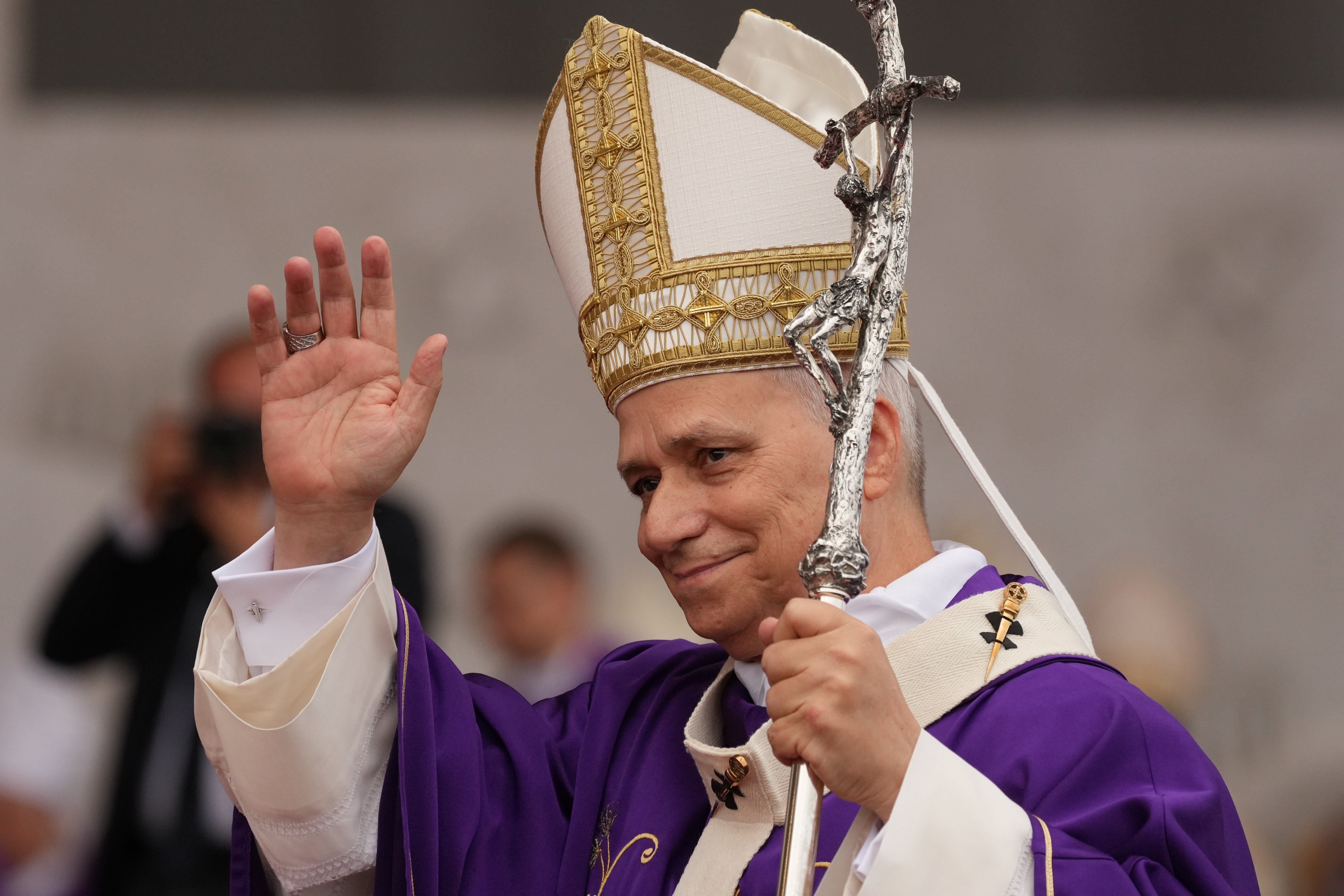August 30, 2022 at 4:13 p.m.
Reducing saints to dead people “up there” is not consistent with our biblical and theological traditions. St. Paul for one, was known to have addressed “ordinary” Christians as saints in his epistles. In so doing, I doubt he was signaling that their lives merited the veneration and esteem we attribute to holy people who have clearly demonstrated their sanctity. At the same time, he wanted to encourage all the baptized to live up to our rightful vocation. He writes, Christ “imputes to us His holiness and we become the righteousness of God” (2 Cor. 5:21).
The Church itself is called “holy,” as one of its four marks of identification. Admittedly, in view of all the scandals and hypocrisy we have seen across the centuries and witnessed in our own times it is very difficult for many, including Christians, to see the Church as anything that deserves to be called holy. But it is not a matter of what title we earn or state to which we are called, because this is God’s doing, not ours.
At the end of the first chapter of his Epistle to the Ephesians, St. Paul makes a very profound and somewhat enigmatic proclamation. After describing what might be called the glorification of Christ as King — how God has raised him up and placed him over all the powers of this world and the realms of heaven — he concludes by saying, “And he put all things beneath his feet and gave him as head over all things to the church, which is his body, the fullness of the one who fills all things in every way” (Eph. 1:22-23).
The word “fullness” (in Greek, “pleroma”) is the subject of much theological reflection. What is irrefutable, is that St. Paul is saying that the very identity of Christ himself is bound to his union with the entire people of God, HIS church. We are not just “the” church, but the very body of Christ, in a real, if mystical way. So, if Christ is holy, then how can we not be?
Here is where the challenge arises. If we are living lives of virtue or, at least, opening our minds and hearts to the change and transformation our faith in Jesus invites us to — which leads to sanctity — then we are becoming what we are called to be: sanctified. Jesus himself told us: “be holy as your heavenly father is holy” (Mt. 5:48). The Matthean word is often translated into English as “perfect” or “perfected.” Luke uses a word that translates as “merciful” (Lk.6:36), which gives us a clue that holiness and being merciful are something connected.
What is the most effective sign of God’s holiness, if not God’s mercy? I will not attempt to define or capture the full meaning of God’s merciful heart, but it certainly contains, among other things, a perpetual willingness to forgive, encourage, lift up and restore what has been debased — and to suffer the pain and indignity that sin has caused without vengefulness. In short, it is love. To be holy, is to love as God loves.
All the sick and perverted effigies of “love” that we witness throughout the sordid history of fallen humanity, are they not a mockery of the love of God? The abuse of minors and other vulnerable persons, the imposed slavery of domestic violence, the exploitation — self-employed or imposed — of those who market their bodies in the pornography industry (the Internet’s most prosperous!) or other base relationships, all these distortions of “love” mar the humanity that is made in the image and likeness of God, to which we are all called. No wonder it wounds the body of Christ that the church is called to be, when the behavior of those who call themselves Christians is anything but what St. Paul tries to describe as the true signs of love in that famous passage from 1 Corinthians, so often chosen by couples at their wedding (cf. 1 Cor. 13).
How then do we reconcile the unholiness we see in ourselves and all around us with the idea that somehow we are not only called to become saints (someday), but actually to be saints — or “sainted” — here and now? For one thing, we need to dispel the notion that saints are dead people. That would be an insult to, among others, St. Térèse de Lisieux who said “I want to spend my eternity doing good on earth.” To the many devotés of St. Anthony, I probably need not belabor the point. Saints are certainly alive and active in our lives, praying for us, encouraging us and, in many ways, helping our salvation to be accomplished. More than we know, no doubt. Among them are certainly friends, parents and godparents who pray for us still, though they have “gone before us marked with the sign of faith” (cf. Heb. 12:1-2). Some may still need our prayers, but we are united in seeking one another’s sanctity.
So here is how I approach the doubt and cynicism, even the near despair, of those who find it almost impossible to see the face of Christ in the sinful humanity of others, and indeed what we might call the “institutional” church. I start with myself in praying before God and others that I may not be a scandal. Scandal (in Greek, “skandalon”) means “stumbling block,” or an obstacle. If I allow my sins, or the sins of others, to discourage me from relying on God’s mercy and the grace to continue to follow Jesus — “the way, the truth and the life” (Jn. 14:6) — then for that reason alone, I am resisting holiness, refusing to be made into a saint. If I allow the signs of sin and unholiness within members of the body of Christ and, at times, etched into institutional patterns and structures without seeking with all my strength and ability to reform and repair them, I deny Jesus what the Father has given to him — and to us — to be the fullness of his identity! I deprive Jesus of the Father’s gift, which is to see in us a reflection of himself and in human form.
To be honest, the Way of Jesus Christ is often seen more like a steep slope, a long and winding road, even a ladder or a staircase. It takes one step at a time. Yet the road to recovery often follows that one small step forward: the decision to attend that 12-step meeting, the letter or phone call to say “I’m sorry,” and for some, just the courage to make that confession, put off for some many years. God waits for us. Saints are merely sinners who accept his mercy. So be the saint you are called to become!
Follow Bishop Ed on Facebook at facebook.com/AlbanyBishopEd and Twitter @AlbBishopEd
SOCIAL MEDIA
OSV NEWS
- ‘Joy Within His House’: An inside look into the life of cloistered nuns
- Avatar: Fire and Ash
- Washington Roundup: Trump suspends green card lottery; health care subsidies set to expire
- Catholic actor finds Christmas joy in helping US charity
- Trending: A (young) revival in the faith?
- Upcoming symposium gives nod to St. John Paul II’s ‘Letter to Women’
- Experts offer strategies for connection during Christmas amid US ‘epidemic’ of loneliness
- A new rider at the helm: Bishop Richard Moth named archbishop of Westminster
- Cardinal Pizzaballa visits Gaza City’s Holy Family Parish before Christmas
- Daughter of Jimmy Lai: Don’t let my father become a martyr for truth and for freedom








Comments:
You must login to comment.